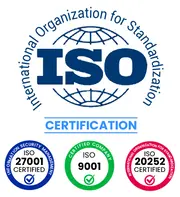Certified Global Research Member


Key Questions Answered
- Global Market Outlook
- In-depth analysis of global and regional trends
- Analyze and identify the major players in the market, their market share, key developments, etc.
- To understand the capability of the major players based on products offered, financials, and strategies.
- Identify disrupting products, companies, and trends.
- To identify opportunities in the market.
- Analyze the key challenges in the market.
- Analyze the regional penetration of players, products, and services in the market.
- Comparison of major players’ financial performance.
- Evaluate strategies adopted by major players.
- Recommendations
Why Choose Market Research Future?
- Vigorous research methodologies for specific market.
- Knowledge partners across the globe
- Large network of partner consultants.
- Ever-increasing/ Escalating data base with quarterly monitoring of various markets
- Trusted by fortune 500 companies/startups/ universities/organizations
- Large database of 5000+ markets reports.
- Effective and prompt pre- and post-sales support.
Leo Satellite Market Growth Projections and Opportunities
The Low Earth Orbit (LEO) satellite market is influenced by several key factors that shape its growth and development. Firstly, technological advancements in satellite design, manufacturing, and launch capabilities play a significant role in driving the expansion of the LEO satellite market. Innovations such as miniaturization of satellite components, improved propulsion systems, and cost-effective launch solutions enable companies to deploy a growing constellation of LEO satellites for various applications, including communication, Earth observation, and remote sensing. Secondly, the increasing demand for high-speed internet connectivity in remote and underserved areas drives the growth of the LEO satellite market. LEO satellite constellations offer low-latency, high-bandwidth internet connectivity to regions where terrestrial infrastructure is inadequate or unavailable. Companies such as SpaceX, OneWeb, and Amazon are deploying LEO satellite megaconstellations to provide global broadband coverage, tapping into a vast market of potential customers seeking reliable internet access. Furthermore, market competition among satellite operators and service providers is a significant factor shaping the LEO satellite market. With several companies vying to establish dominant positions in the burgeoning LEO satellite industry, competition is driving innovation, lowering costs, and expanding service offerings. Companies differentiate themselves through factors such as network performance, coverage area, pricing models, and value-added services, creating a dynamic and competitive market landscape. Moreover, regulatory policies and spectrum allocation decisions impact the growth of the LEO satellite market. Governments and regulatory bodies allocate frequency bands for satellite communications and establish rules governing satellite operations, spectrum use, and licensing requirements. Clear and favorable regulatory frameworks facilitate investment and deployment of LEO satellite systems, while regulatory hurdles or spectrum constraints can impede market growth and innovation. Additionally, partnerships and collaborations between satellite operators, technology providers, and end-users drive market expansion and diversification. Satellite operators form strategic alliances with telecommunications companies, government agencies, research institutions, and commercial enterprises to develop customized solutions and address specific market needs. Collaborative efforts facilitate technology transfer, knowledge sharing, and joint research and development initiatives, fostering innovation and market growth in the LEO satellite sector. Furthermore, economic factors such as market demand, capital investment, and return on investment (ROI) considerations influence the development of the LEO satellite market. Companies assess market trends, customer preferences, and revenue potential to make strategic decisions regarding satellite deployment, service offerings, and business expansion. Financial viability, cost-effectiveness, and profitability are key considerations for stakeholders in the LEO satellite industry as they navigate market dynamics and investment opportunities. Moreover, environmental sustainability and space debris mitigation efforts are increasingly important considerations in the LEO satellite market. With the growing number of satellites being launched into LEO, concerns about orbital debris, collision risks, and space sustainability have gained prominence. Satellite operators implement measures to minimize space debris generation, deorbit defunct satellites, and adhere to space debris mitigation guidelines to ensure the long-term sustainability of LEO satellite operations. Covered Aspects:| Report Attribute/Metric | Details |
|---|---|
| Growth Rate | 16.80% (2023-2032) |
Leo Satellite Market Highlights:
Leading companies partner with us for data-driven Insights
Kindly complete the form below to receive a free sample of this Report
Tailored for You
- Dedicated Research on any specifics segment or region.
- Focused Research on specific players in the market.
- Custom Report based only on your requirements.
- Flexibility to add or subtract any chapter in the study.
- Historic data from 2014 and forecasts outlook till 2040.
- Flexibility of providing data/insights in formats (PDF, PPT, Excel).
- Provide cross segmentation in applicable scenario/markets.









